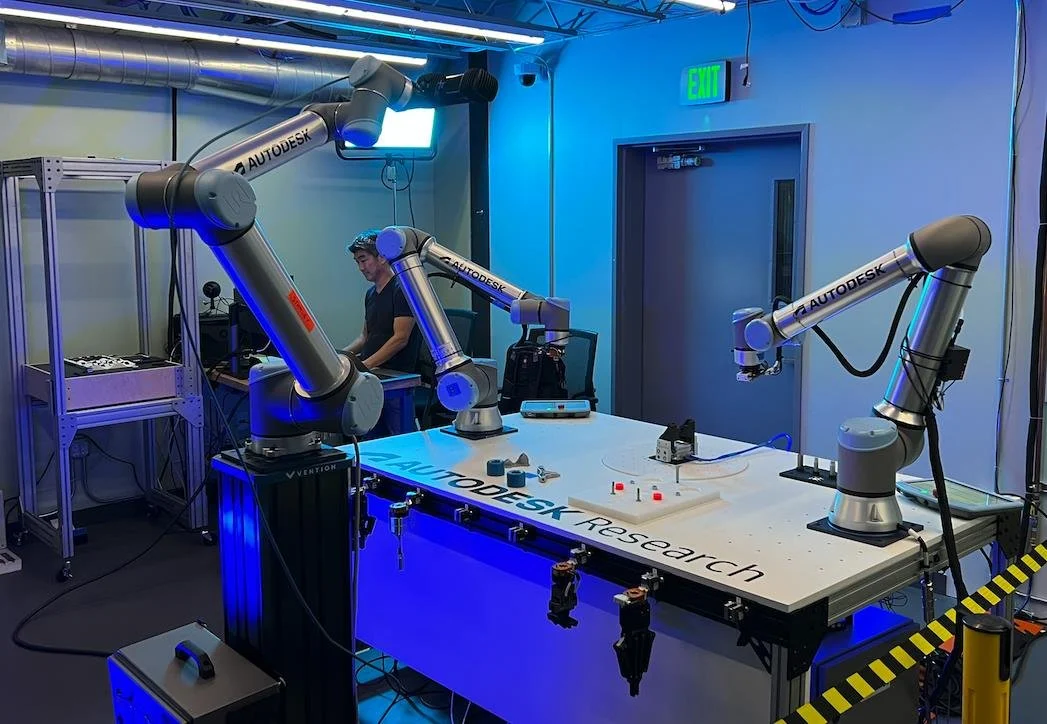Autonomous Robotic Assembly
Demo by: Autodesk
Provided by Autodesk
Autonomous Robotic Assembly
Autodesk is proud to join as the first founding member of the Stanford Robotics Center and has also provided an expendable gift to support the design, construction, start-up and maintenance of a Research Bay.
Autodesk is a leader in 3D design and engineering software. Customers across manufacturing, architecture, building, construction and media and entertainment industries leverage Autodesk tools to design and make anything.
As Autodesk works to change how the world is designed and made, Autodesk Research looks towards the future and explores new possibilities for our customers' workflows. With a diverse team of scientists and industry experts, we conduct research that helps customers design and make a better world for all.
Demos and Future Work
At the Robotics Lab in Autodesk Research, we are exploring robotic automation systems in manufacturing and automation that are adaptive (and responsive) to the real world and flexible (and easy to use) across a wide variety of tasks. Automated product assembly is a core topic of interest. At the Stanford Robotics Center Launch, Autodesk Research is sharing movies from across our robotic assembly research portfolio.
The Autonomous Robotic Assembly of a Skateboard Truck demo combines vision, force sensing with deep-learning based perception and learned behaviors in a systems-based approach to assembling a complex product.
The Coral Maker highlight video demonstrates robotic assembly of living coral onto a larger limestone structure to leverage the benefits of robot assembly to scale up coral reef restoration efforts.
Other research areas highlighted at the launch includes Collaborative Multi-Arm Assembly, Adaptive Construction-Scale Robotic Assembly and Automated Programming for Robotic Assembly using ChatGPT. Learn more about our work on the Autodesk Reseach Publications' Page.
We look forward to collaborating with the students and faculty of the Stanford Robotics Center towards bringing more adaptive and flexible robots into manufacturing and construction by harnessing the new wave of learning-based techniques, datasets and models unleashed by recent advances in AI.


